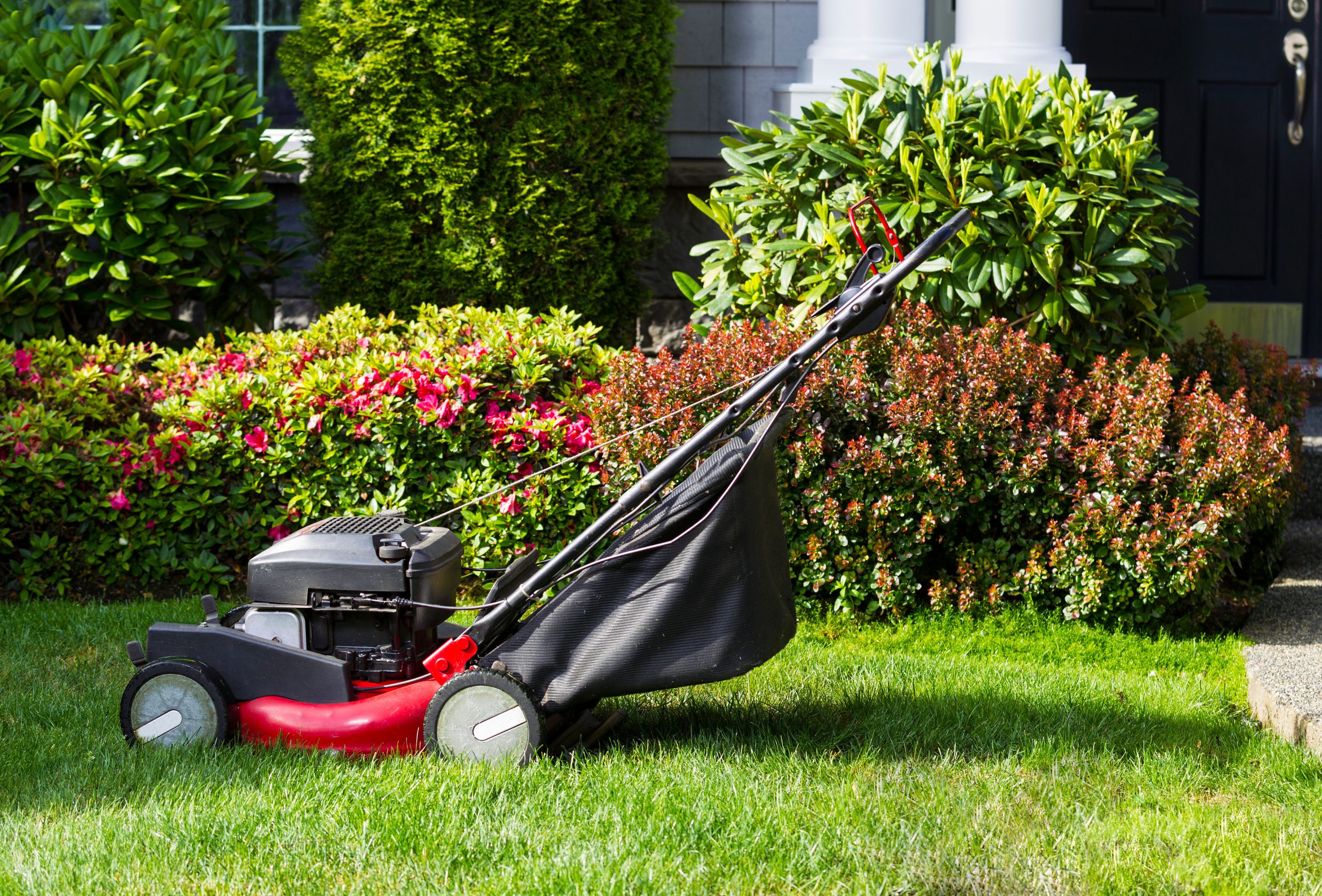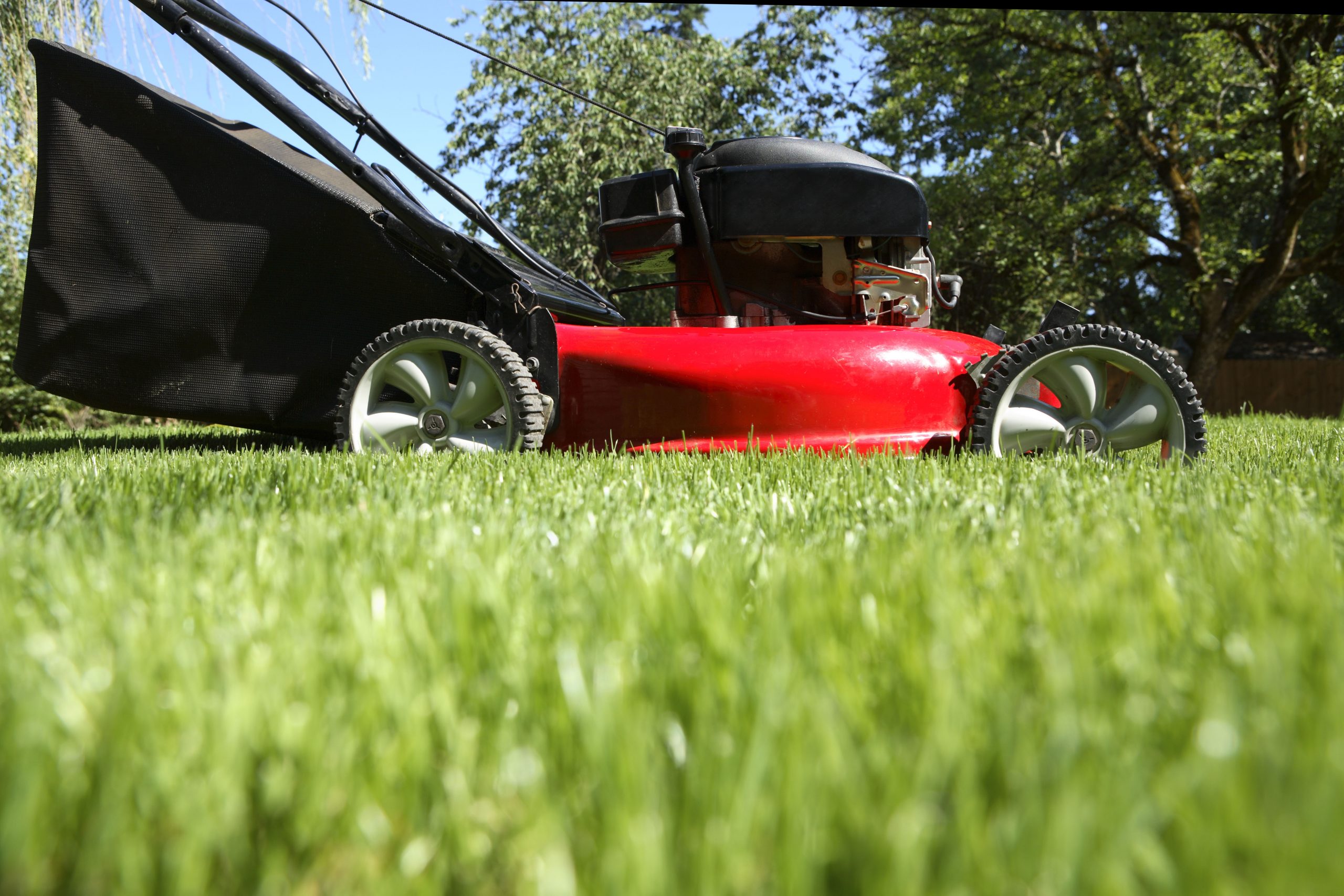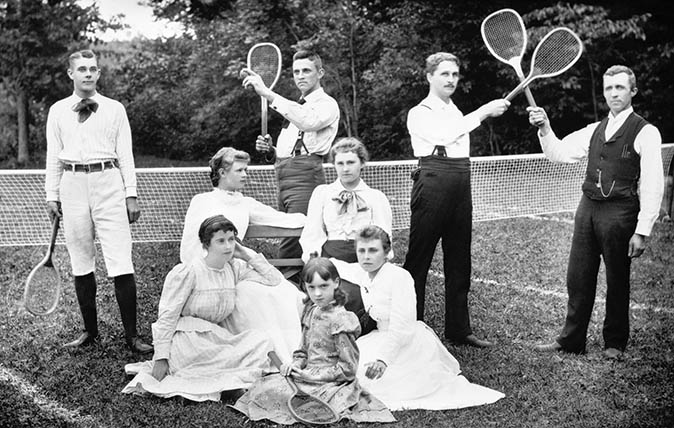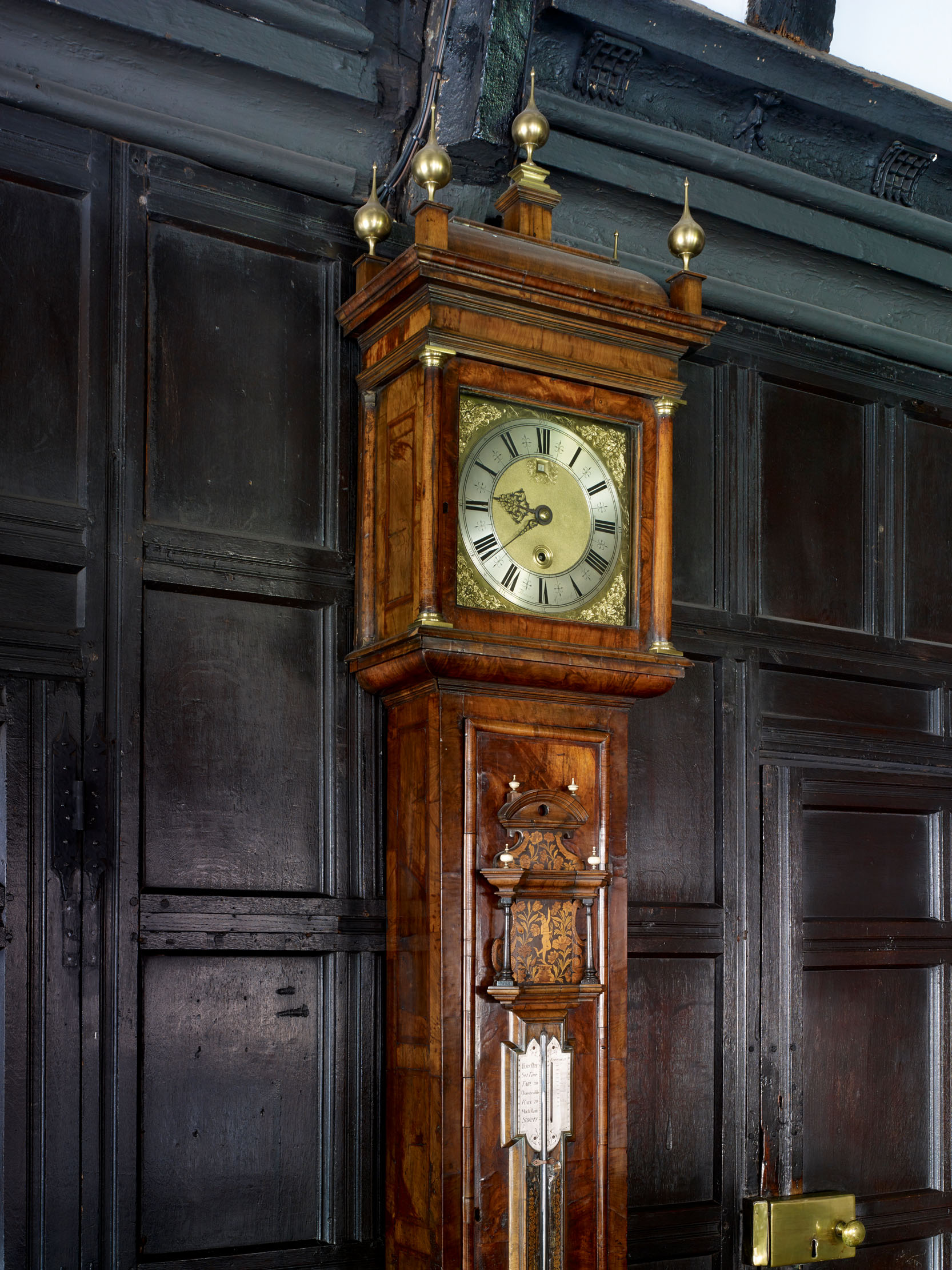Curious Questions: Who invented the lawnmower?
Martin Fone delves into the history of the lawnmower and discovers a link to weaving machines.


I enjoy pushing a lawnmower. I revel in the intoxicating aroma of the green leaf volatiles, part self-healing mechanism, part antibiotic, and part early warning system, released by the grass as the blade goes over it, creating one of the quintessential smells of an English summer.
Recently, I had to replace my machine, making my small contribution to the global lawn mowing market which generated revenues of $18.6 billion in 2019.
A lawn is the physical manifestation of that tenet of English common law that a man’s home is a castle. When a castle was constructed, the land immediately around it was cleared of trees to ensure that any foe could not creep through the woods to mount a surprise attack and that there was a patch of clear ground upon which to fight.
Grasses sprouted naturally in the clearing and were kept down to a reasonable level by grazing livestock, a form of grass management that ensured a plentiful supply of manure. Launde was the Middle English word for ‘a glade or an open space in a forest or between woods’.
By 1733 launde had become lawn, its definition of ‘grassy ground kept mowed’ reflecting the fashion for more formal and well-maintained patches of grass. Although livestock was still used, the favoured approach to grass maintenance was to use a scythe.
This was physically demanding work and laborious, an acre of grass easily occupying three men for a day. For the best results the scythe could only be used early in the morning or towards dusk when the grass was bedewed. Even in the most practiced of hands the results were far from perfect, wielding the scythe in a semi-circular arc left swirls on the grass and its serrated blade resulted in an uneven cut.
As Britain became increasingly industrialised, budding inventors with engineering know-how saw the opportunity to mechanise processes that hitherto had been performed by hand. One such was John Lewis who owned the Brinscombe Mill in Stroud. When a piece of cloth is initially woven, its surface is rough and uneven and needs to be finished off to create a flat surface. The rough edges or nap were cut off by hand using shears, a skilled and laborious process.
Exquisite houses, the beauty of Nature, and how to get the most from your life, straight to your inbox.
Lewis’ masterstroke was to patent, in 1815, a machine that allowed the cloth to move underneath a horizontal blade, which trimmed off the nap evenly and quickly.
In the 1820s Stroud-born Edward Beard Budding worked at Lewis’ mill as a ‘mechanician’. It was during this time that Lewis further enhanced his machine by replacing the horizontal blade with a helical-shaped one which allowed for continuous cutting.
If he had not actually worked on these improvements, Budding would have seen the machines in action. An inventive chap, he wondered whether Lewis’ machine could be adapted to create an even surface by trimming off the unruly tops of blades of grass.
It could. What Budding produced was a cast iron machine which used gears and a roller to generate enough energy to turn a horizontal 19-inch cutting cylinder fitted with three blades.
As the blades turned, they forced the grass against a fixed plate on the underside of the mower and cut the stalks.
A second roller in the middle of the machine allowed the height of the blades to be adjusted. It was pushed from behind and the cuttings were thrown forward into a tray. Astonishingly, the basic design has remained largely unaltered to this day.
Budding teamed up with John Ferrabee, owner of the Phoenix Ironworks in Thrupp, just outside Stroud, to develop a working prototype which they would only try out at night, fearing ridicule from the locals.
Satisfied that it worked, Budding applied for a patent in May 1830 for what he described as ‘a new combination and application of machinery for the purpose of cropping or shearing the vegetable surfaces of lawns, grass-plat and pleasure grounds, constituting a machine which may be used with advantage instead of a scythe for that purpose’.
He also stressed the health benefits of his invention, claiming that ‘country gentlemen may find in using my machine themselves an amusing, useful, and healthy exercise’.
The patent (No 6081) was duly granted on August 31, 1830, and the mowers were made available on a commercial basis for the cost of ten guineas, including a wooden packing case.

One was purchased by Mr Curtis, head gardener at the Zoological Society in Regent’s Park, who, having put the machine through its paces for four months, professed himself ‘entirely satisfied’ with the results.
‘With two men, one to draw and another to push’, he commented, ‘it does as much work as six or eight men with scythes and brooms; not only in mowing, but in sweeping up the grass, and lifting it into a box; performing the whole so perfectly as not to leave a mark of any kind behind’.
Early advertisements showed gentlemen dressed in white trousers, coat tails, and a top hat pushing their mowers – the only way to mow a lawn, I feel – but despite the impression given, using Budding’s machine was no stroll in the park.
They were heavy, the clutch had to be held down continually to maintain the drive and downward pressure was needed to coax it into moving and cutting. Still, as early proponents claimed, it afforded ‘an excellent exercise to the arms and every part of the body’.
By 1832 Budding had allowed J R & A Ransomes of Ipswich, then producers of heavy agricultural machinery, to produce and sell his mowers under licence.
Ransomes extended the range to include machines with 16- and twenty-two-inch cutting cylinders and by 1840 had sold over a thousand. Budding, though, had moved on to other things, including inventing a screw-adjustable spanner, before dying of a stroke on September 25, 1846. Examples of his early machines can be seen at the museums in Stroud and the London Science Museum. In 2015, a blue plaque was erected in his memory on the wall of what was his workshop in Thrupp, now the site of the Stroud Brewery.
Lawnmower technology moved on, while remaining faithful to Budding’s fundamental design. Horse drawn mowers were introduced in the 1840s. To minimise damage to the turf, the horses were fitted with leather slippers.
Once Budding’s patent had expired, Leeds-based Thomas Green developed a machine that used a chain to generate power to the rear roller and cutting cylinder rather than gears. It was lighter and quieter than its predecessors but not as quiet as its name, Silens Messor (silent mower), suggested. Launched in 1859 it became the first commercially successful machine.
Steam-driven mowers appeared in the 1890s and in 1902 Ransomes launched the first lawnmower powered by an internal combustion engine.
An American farmer, C C Stacy, came up with an electric mower in the 1930s, but the economic impact of the Depression meant that it was only after the Second World War that electric mowers were mass-produced. Sadly, Stacy had not patented his design.
Whether you see it as a pleasure or a chore, Budding made cutting the lawn considerably easier.

Curious Questions: Who invented tennis?
It's 150 years since the All England Lawn Tennis and Croquet Club was formed – though originally it was solely for

Curious Questions: Why do clocks go clockwise?
There's nothing to stop the hands of a clock from running backwards — indeed, some actually do — but the overwhelming majority
After graduating in Classics from Trinity College Cambridge and a 38 year career in the financial services sector in the City of London, Martin Fone started blogging and writing on a freelance basis as he slipped into retirement. He has developed a fearless passion for investigating the quirks and oddities of life and discovering the answers to questions most of us never even think to ask. A voracious reader, a keen but distinctly amateur gardener, and a gin enthusiast, Martin lives with his wife in Surrey. He has written five books, the latest of which is More Curious Questions.
